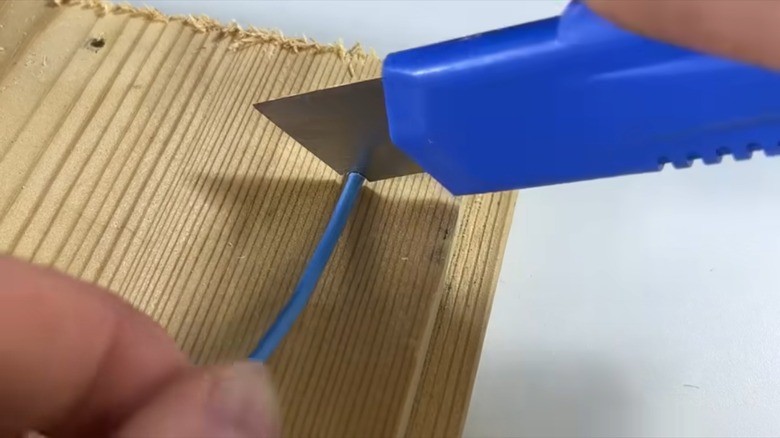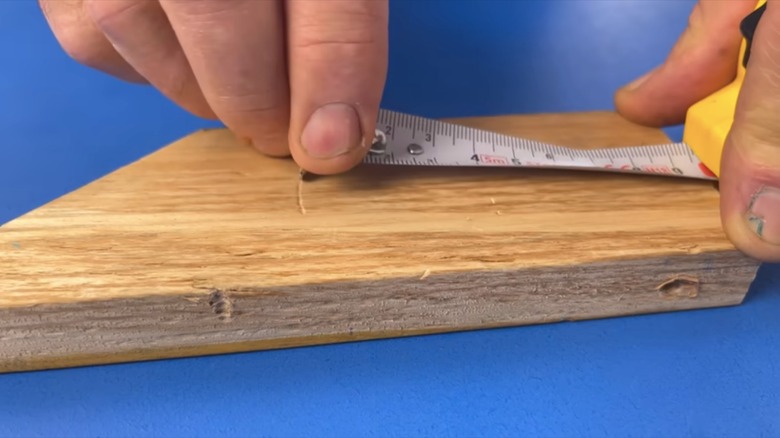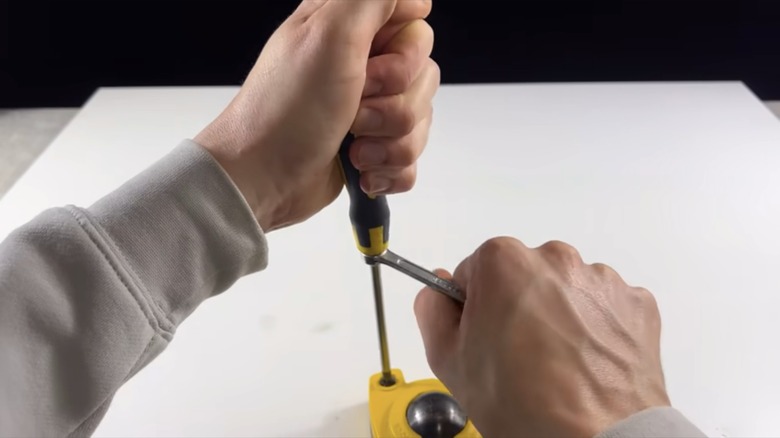8 Hidden Features On Common Tools That You've Been Missing Out On
Unfortunately, some of the smaller common tools every homeowner should have do not come with operating manuals. At first thought, that doesn't seem like a problem — we all know how a hammer works, right? But it means built-in features and clever hacks — like using your hammer as a mallet by covering the face with a tennis ball — might not be common knowledge. Chances are that you're familiar with the main functions of the average set of tools, but many have nifty components that exceed the equipment's basic use.
We have uncovered eight different hidden features of several standard repair tools, from pliers to clamps, so you can make the most out of your gear. Many of the extra attributes give the tools a multi-purpose function and can even take the place of other gadgets, eliminating your need for loads of equipment. These are all built-in features and don't require buying additional accessories to pull off. So, grab your toolkit and see what you've been missing.
Open jars with a pair of scissors
Some kitchen scissors have metal teeth on the inside of the handle, and it's not just for style. This handy feature can be used as a grip to open twist-off jars and bottles the same way you can using pliers to unscrew tough lids. Besides handling the hard-to-open containers, the scissor's teeth double as a nutcracker. You can use it to shell walnuts or crab legs by simply squeezing the handle.
Reverse clamps to make a jack
A ratchet bar clamp is useful for keeping materials in place and applying consistent pressure during projects. And with a little unscrewing, the clamp turns into a utility jack. After undoing the wingnut, slide off the jaw piece and reattach it to the opposite end of the bar to make it a spreader. You can use this function to lift heavy furniture.
Strip wires with a utility knife
The chipped edge on the corner of a utility knife blade is not a defect — it's a nifty feature for stripping wires. The groove makes taking the rubber insulation off electrical cords easy. The curved indent is shaped in a manner where you can score the coating and remove it without slicing through the internal fibers.
Safely trim box cutter blades
Some box cutters are designed with snap-off blades so you can always have a sharp edge at your disposal. On these types of knives, the end cap is removable. Once you pull the tab, you'll notice a slit in the cap's bottom that's the same size as the blade. This piece doubles as a safety guard to snap off the knife without exposing your fingertips to razor-sharp metal.
Measuring tapes have a built-in marker
Yellow retractable measuring tape is synonymous with repair work, but you could be missing out on all the ways this tool can help you get the job done. While you can turn your tape measure into a handy notepad, the perforated edge on the pull-out tab can also be used as a measurement marker. Use it to indent soft materials like wood, foam, or drywall to always have accurate dimensions.
Easily cut caulking tubes
When it's time to caulk the tub or floorboards, leave the utility knife or scissors in the closet. To cut the sealant's tube, all you really need is the caulking gun. There is a hole, often near the handle, perfectly sized to fit the caulking tip. Slip the pointy end of the tube in, squeeze the grip, and your container will be cut clean.
The wrench and screwdriver are compatible
The ridge edges on a screwdriver handle happen to perfectly match the angles of a box wrench. You can slide the wrench onto the screwdriver to increase your leverage and make unwinding tight screws easier. Instead of an entire ridged handle, some screwdrivers only have a bolt-like piece on the end of the shaft that works for this box wrench hack, too.
Pliers double as wire cutters
Finally, you don't have to dull your household scissors in the process of snipping wires. On the side of certain types of pliers, there is an indent that can take care of the job. Just slip the metal strips into the notch and squeeze the handle. It will break the material into pieces you can shape with the plier's jaw.








